Bird eggs are often bright but some may be red. While rare, birds that lay red eggs exist in North America, Europe, Asia, Africa, and South America.
These birds often live in tropical forests, which makes them elusive. Others live close to human settlements and lay red or red-patterned eggs in nests.
The color of these red eggs is influenced by each species. Protoporphyrin is organic compound birds use to create red-colored shells.
Birds can create eggs with different red nuances or patterns. However, birds that lay red eggs may not lay eggs of a completely different color.
Red eggs in birds vary from 0.4 to 0.7 inches, in general.
They are laid in clutches, either one per day or one every other day. Incubated for at least a week, these eggs may be incubated by males, females, or both parents.
The following species are some of the most representative when it comes to laying red eggs.
1. Cetti’s Warbler
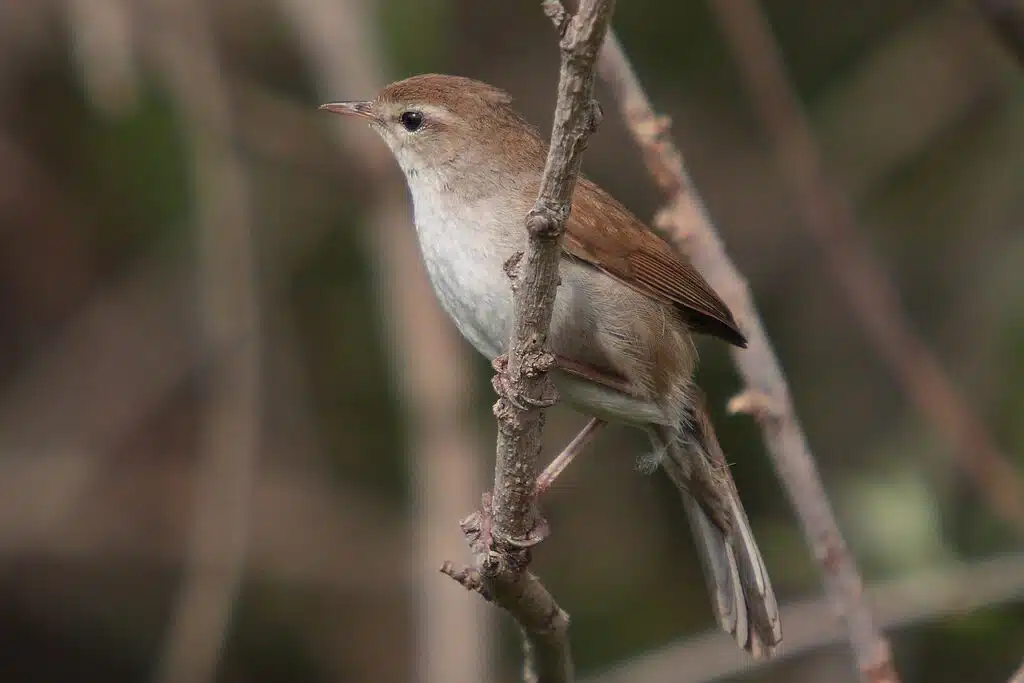
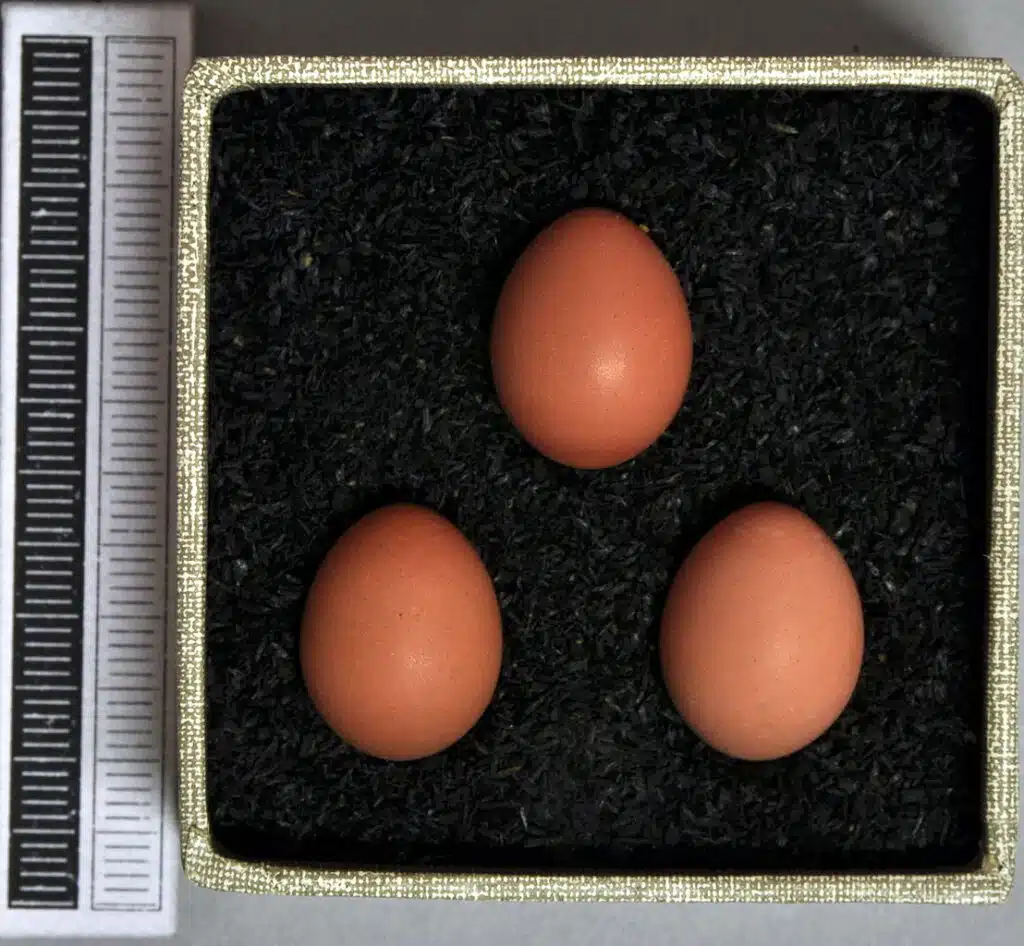
Mostly spotted around Europe, Cetti’s Warblers (Cettia cetti) are some of the typical local birds to lay red eggs.
These eggs are part of a specific breeding system that starts with the male establishing a breeding territory.
This is a territory where multiple females may be attracted to traits such as singing.
Mated females start laying one egg per day until they create their clutch. These are red eggs that may be laid up to 5 days before females start to incubate them.
Cetti’s Warblers don’t lay a fixed number of eggs each time.
Their clutch size varies according to the season. With possible multiple broods per year, Cetti’s Warbler clutches are smaller later in the season.
Up to a couple of broods per year are laid by the female and incubated without the help of the male.
Some exceptions apply, on the other hand. Research shows males of the species that only have a reduced number of mates may help provide for the young.
It takes up to 16-17 days for the eggs to hatch. It then takes up to 1 month for the emerging young to fledge.
Distribution – Europe, North Africa, Middle East
Red eggs nuance – chestnut red
2. Peregrine Falcon

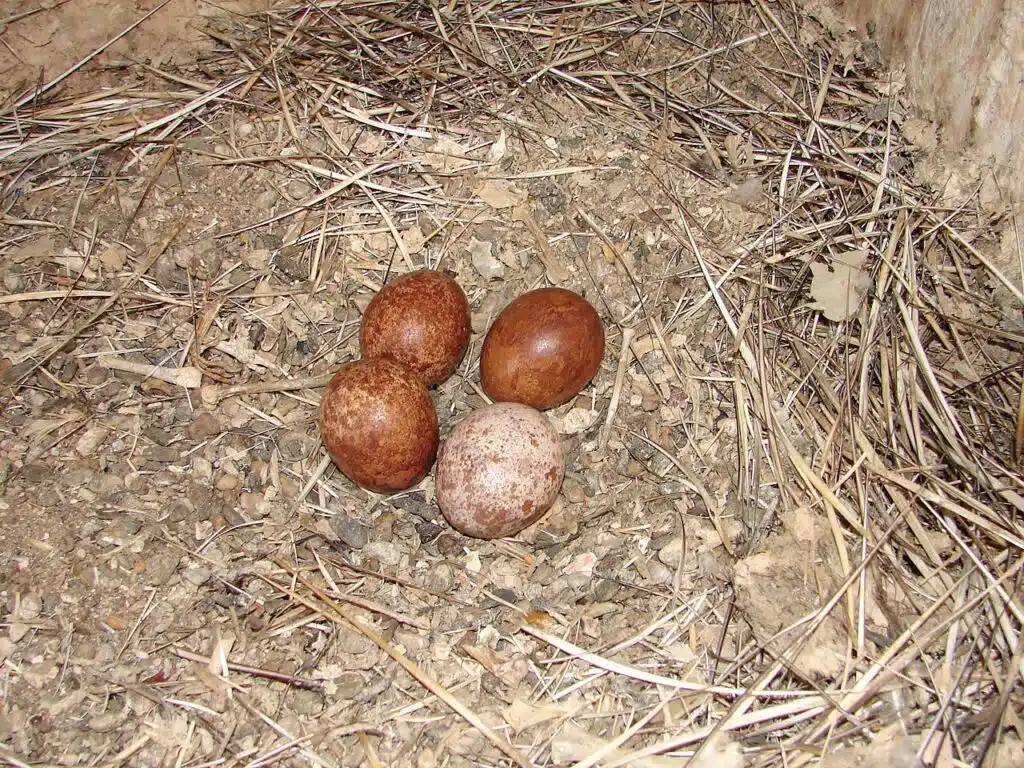
One to 2 red egg clutches are laid by The Peregrine Falcon (Falco peregrinus) in the breeding season, beginning in February.
This is a species that lays red eggs in clutches of up to 4-5 eggs which result in at least two chicks.
Specific nests aren’t built by the female for these clutches. Loose soil or vegetation is chosen as a place to lay eggs.
Open cliffs may also serve as a nesting sight away from predators.
Both male and female Peregrine Falcons take their turns with incubation. Males share their incubation duties during the day while females incubate at night.
The nests of these falcons are never too close together as females lay them at a considerable distance from the clutches of other Peregrine Falcons.
Distribution – The Americas, Europe, Africa, Asia, Australia
Red eggs nuance – brown-red
3. Marans
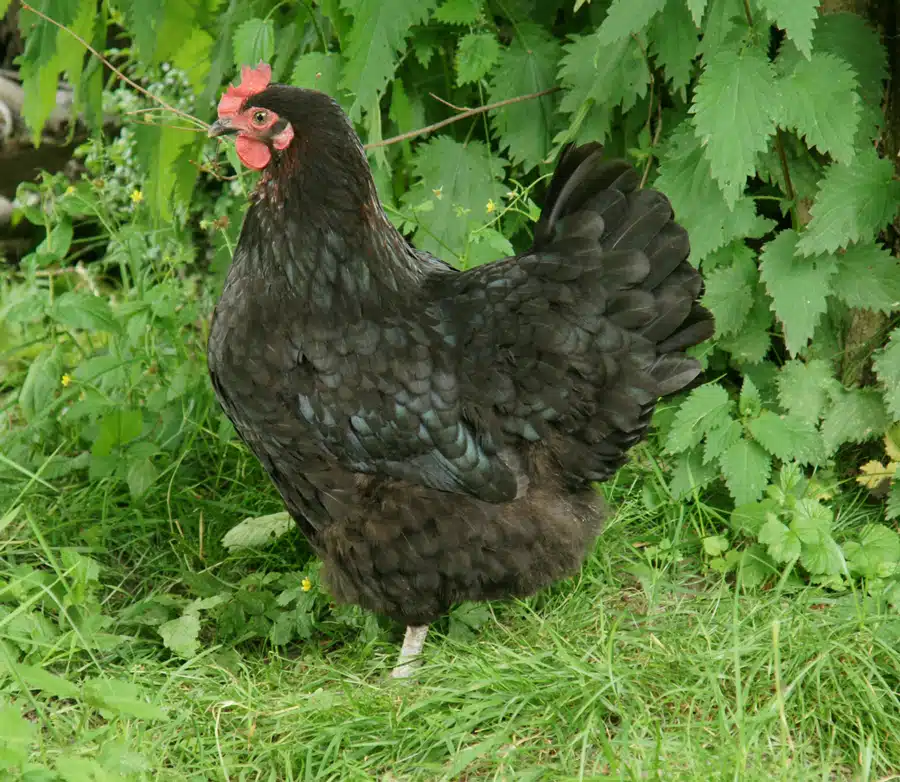
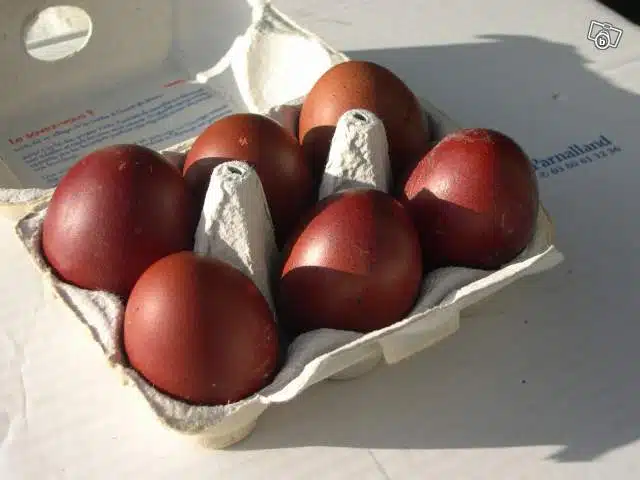
A chicken breed of France, Marans are known for their dark red eggs.
The variation in nuances is high. Some eggs are brown-red while others are chocolate-red or maroon-red.
These birds are specifically imported around the world for their meat and eggs.
Colorful eggs are laid by the species by default.
The number of eggs Marans lay is also quite variable. At least 150 red eggs are expected to be laid per year.
Some of the distinct traits of Marans’ eggs include a thicker shell compared to other eggs as well as possible spherical eggs.
Most eggs have a narrow and a wider end but some may be spherical and challenging to store
Distribution – Europe, North America
Red eggs nuance – red-brown
4. Great Crested Flycatcher
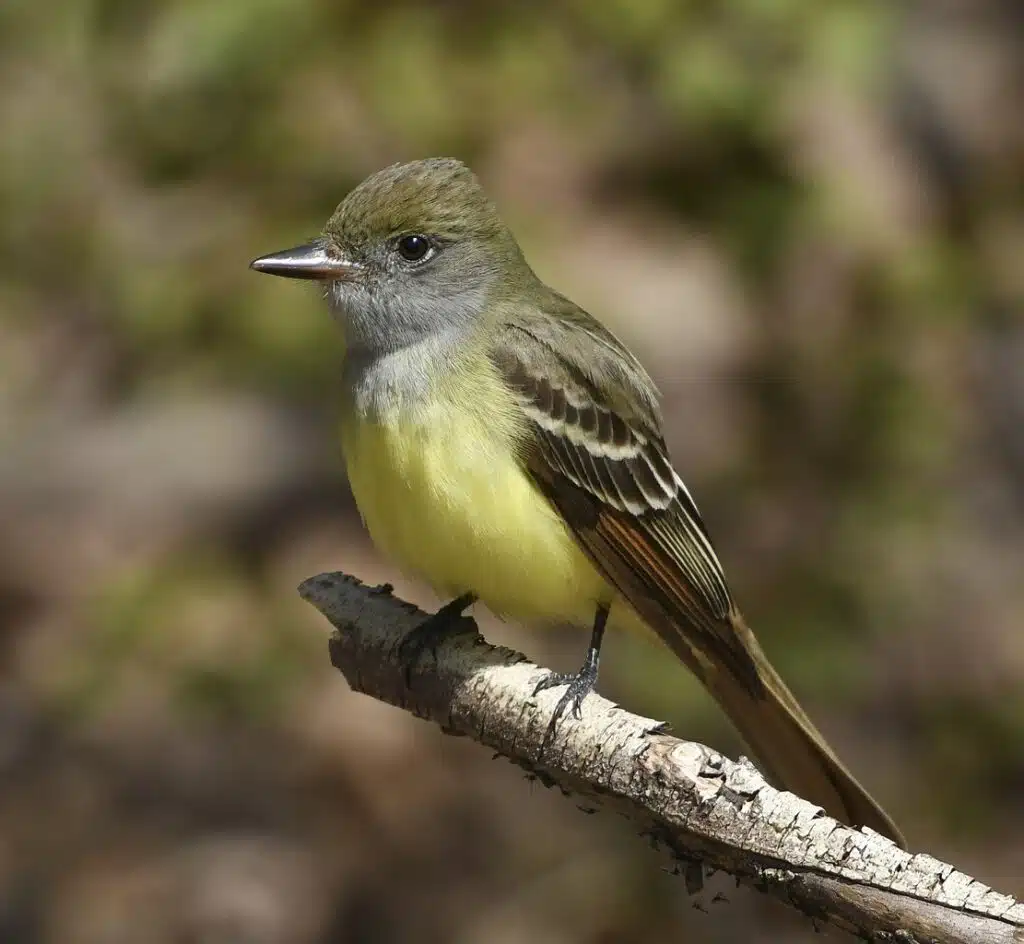
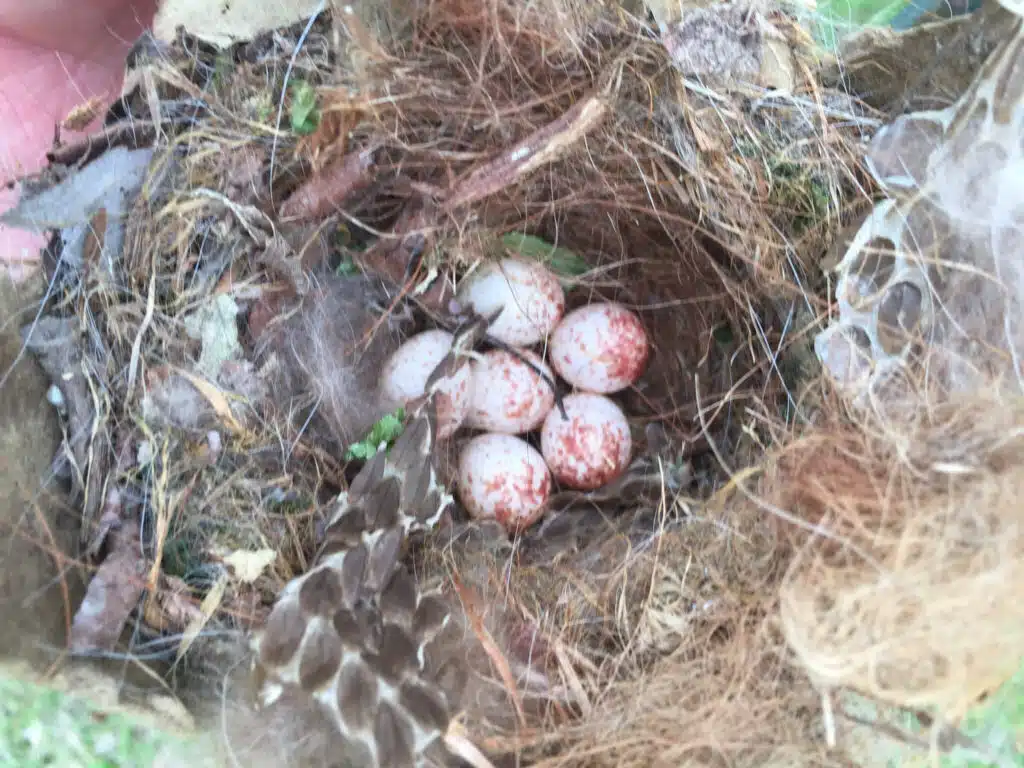
Bright eggs with red patterns are specific to The Great Crested Flycatcher (Myiarchus crinitus). These eggs have varying patterns of a vivid red nuance.
Laid in small clutches of up to 5, Great Crested Flycatchers got through an incubation period with the female.
The emerged chicks remain in the nest for a couple of weeks with males and females taking turns in provisioning.
All types of small insects are fed to the chicks before they leave the nest.
Distribution – The Americas
Red eggs nuance – pink-red, red
5. Carolina Wren
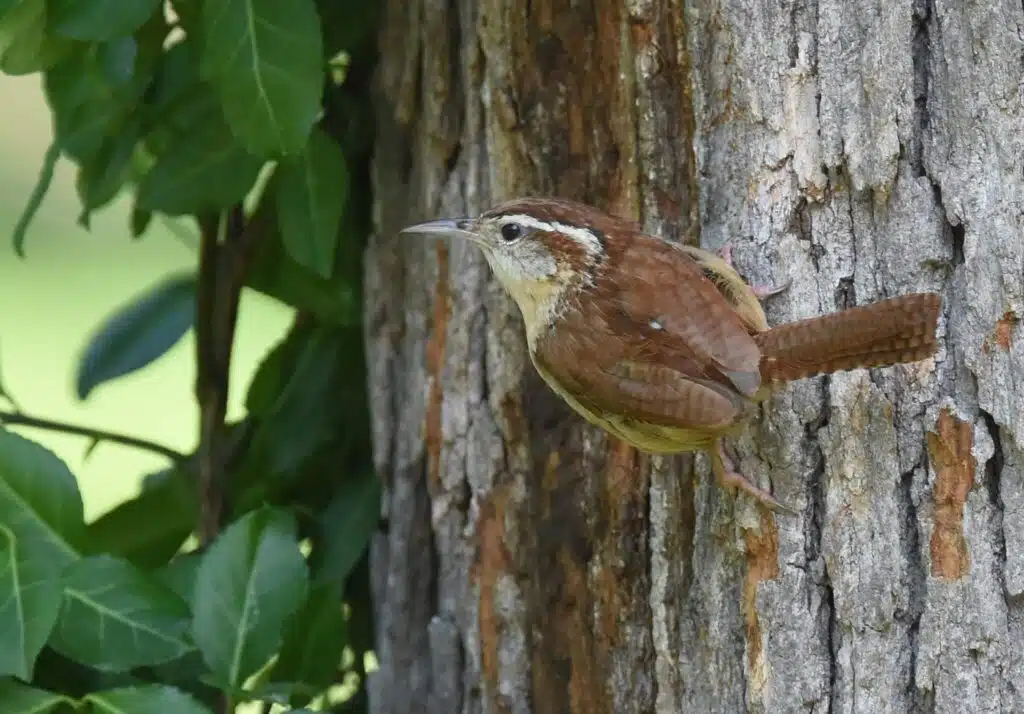
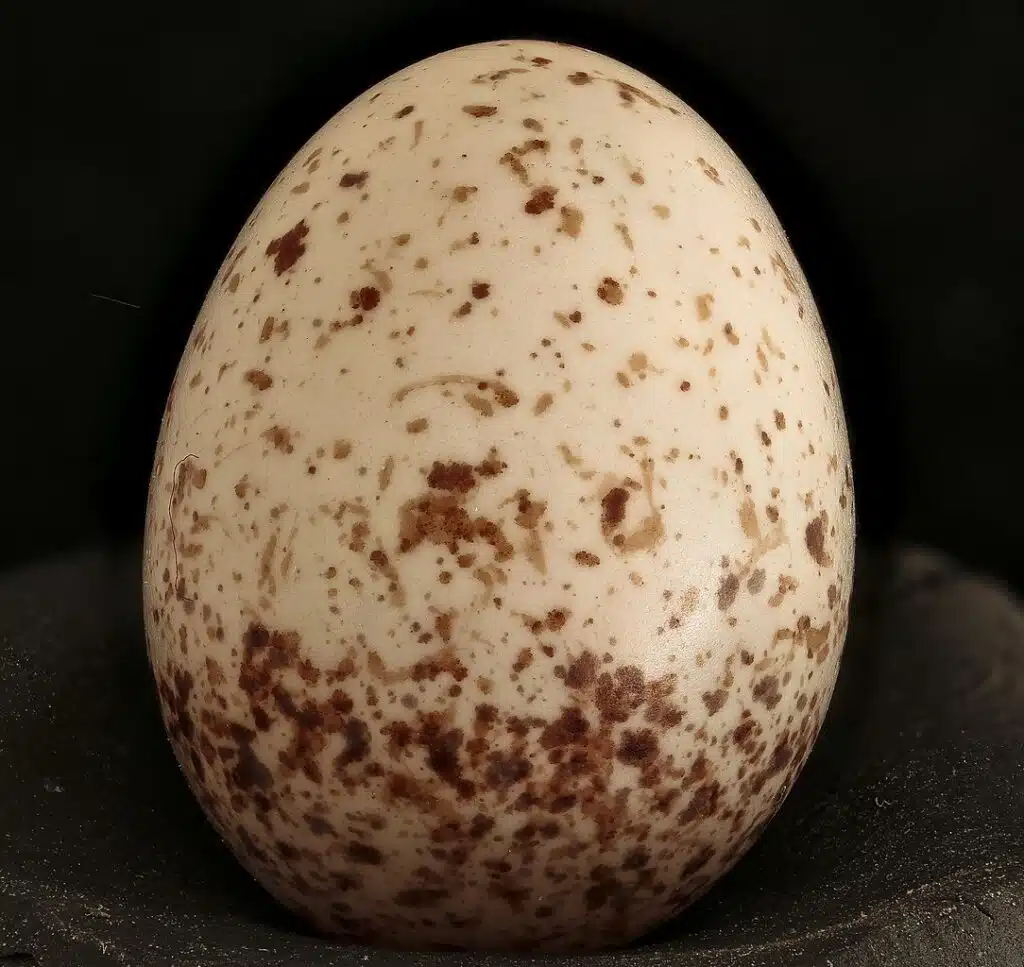
Mostly cream or off-white, the eggs of Carolina Wren (Thryothorus ludovicianus) have red marks across them.
These marks aren’t evenly distributed across the egg as they’re highly visible at the base or the wider section.
Both males and females take care of the eggs, especially after hatching.
While females incubate, males provision more after the eggs hatch.
A typical clutch of 4-6 eggs is cared for a few weeks after hatching. This might be a repetitive occurrence as Carolina Wren has 1-3 broods per year.
The decorated red eggs of the species lead to a high number of emerged birds that may never leave their native areas as they become territorial and live together.
Distribution – Eastern United States
Red eggs nuance – red, red-brown
6. European Robin
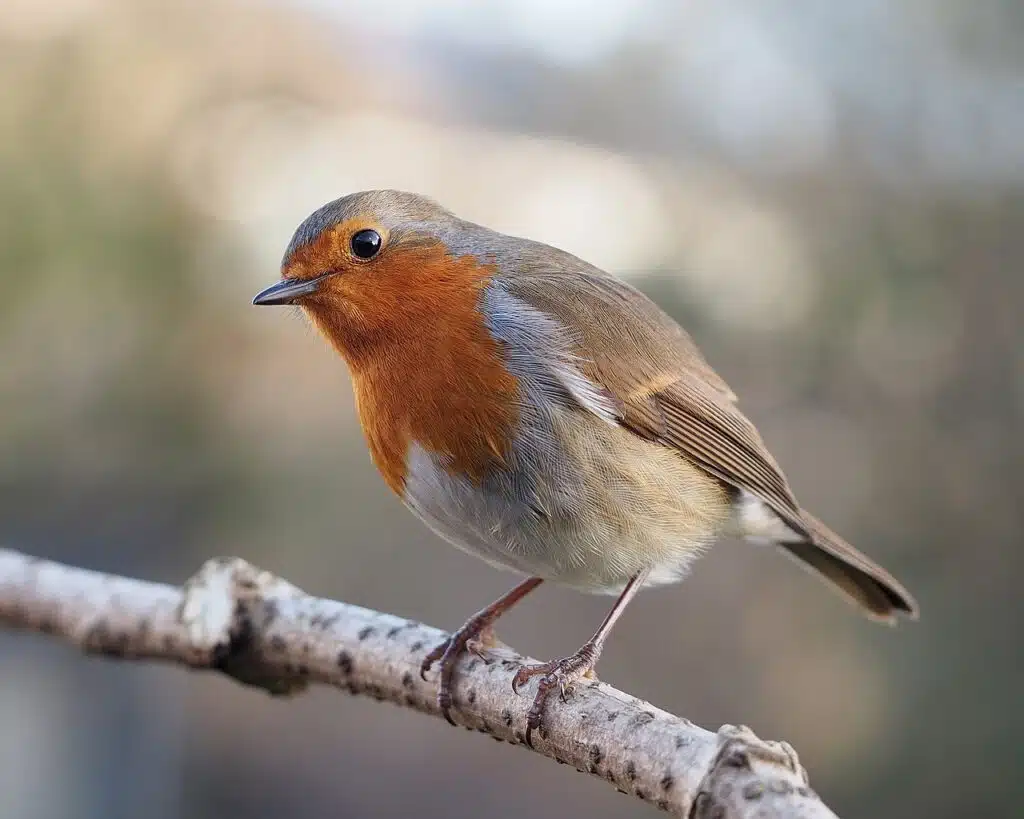
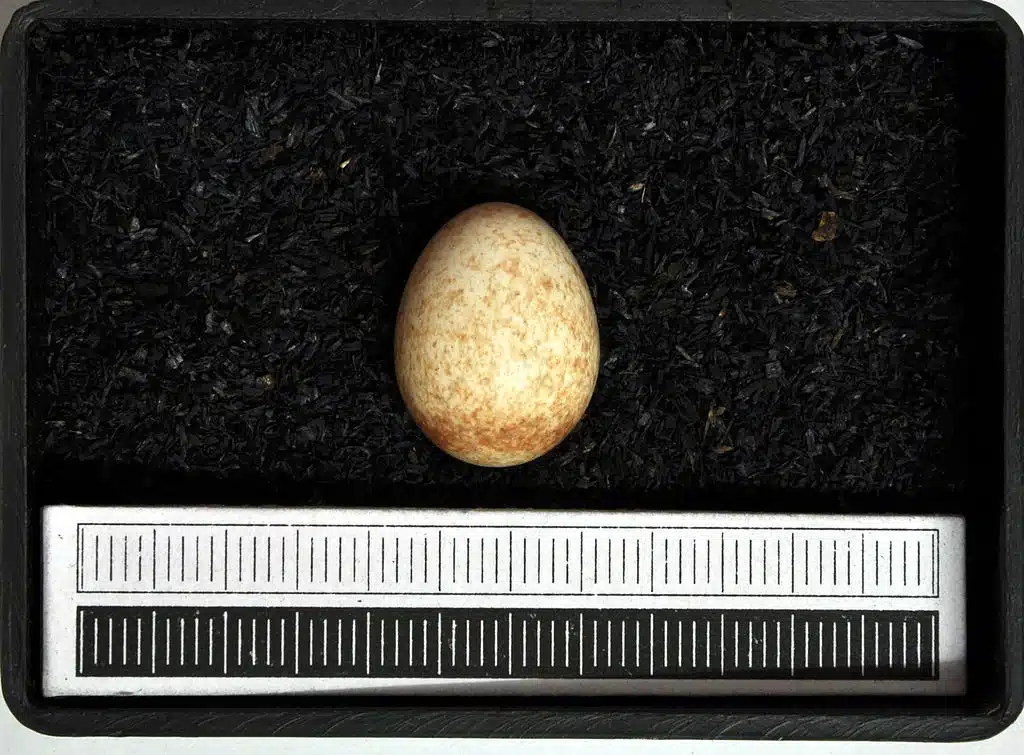
A clutch of 5-6 eggs is specific to The European Robin (Erithacus rubecula). This is a species with cream eggs that show red patterns or pink patterns.
Some variants of these eggs include a base white color with red-brown patterns, particularly on the wider side of the egg.
European Robins chose naturally-sheltered locations to build their nests. These are nests that they make using materials such as moss and dry leaves.
A typical egg laid in this nest measures around 0.5 to 0.7 inches and it hatches into an initially all-brown chick.
Distribution – Europe, North Africa
Red eggs nuance – vivid red, red-brown
7. Black-capped Chickadee
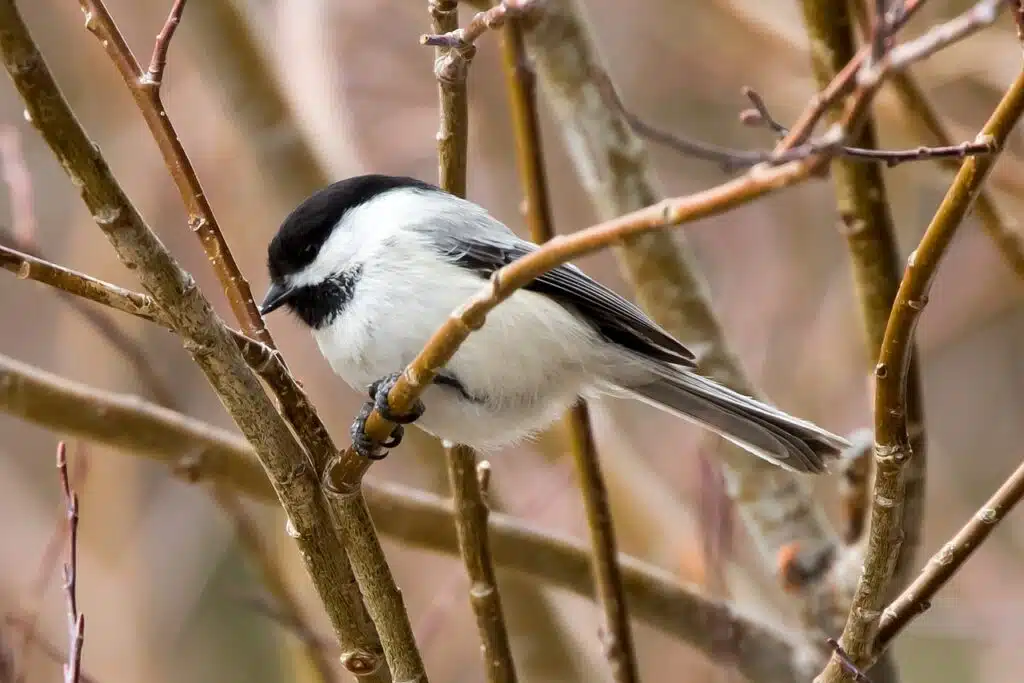
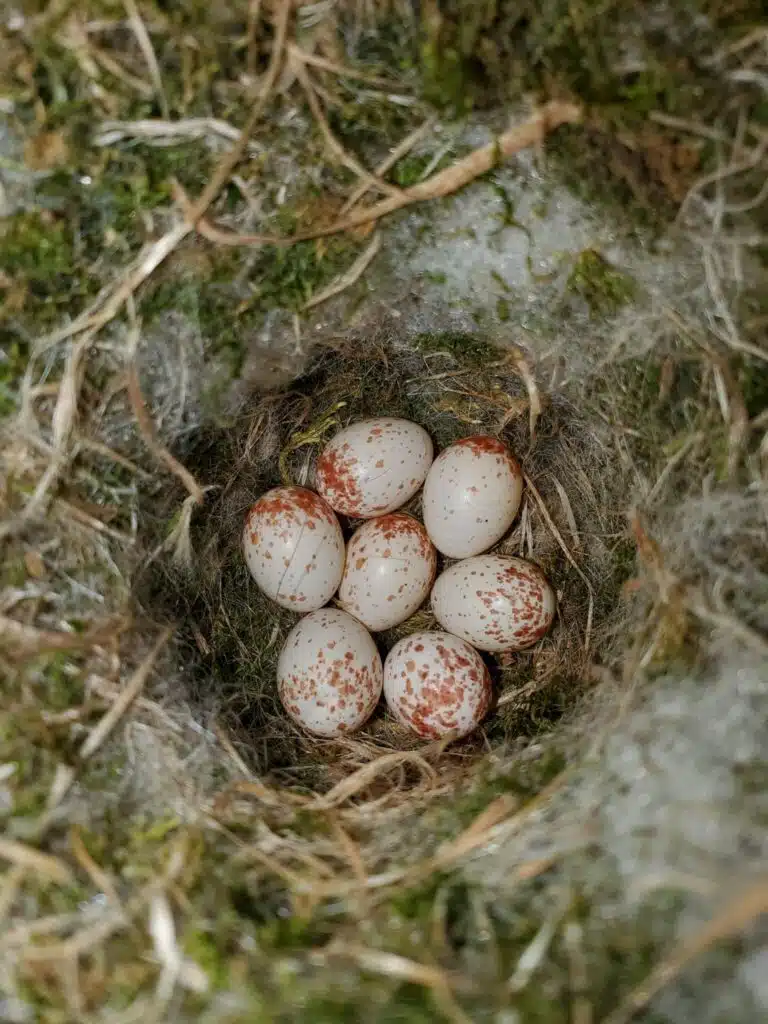
Black-capped Chickadee (Poecile atricapillus) eggs have a white or off-white color with red spots on the wider end.
These eggs are laid in slightly larger clutches of at least 6 eggs but not more than 8 eggs which are guarded and incubated by the female.
During this time, the female is fed by the male.
These eggs of the species are small, measuring up to 0.6 inches and they take up to 2 weeks to hatch, sometimes even less.
More numerous clutches and shorter incubation periods are specific to these eggs.
Female Black-capped Chickadees are also known for their aggressive behavior when it comes to keeping predators away from the clutch.
Distribution – United States, Canada
Red eggs nuance – bright red, pink-red
8. Red-whiskered Bulbul
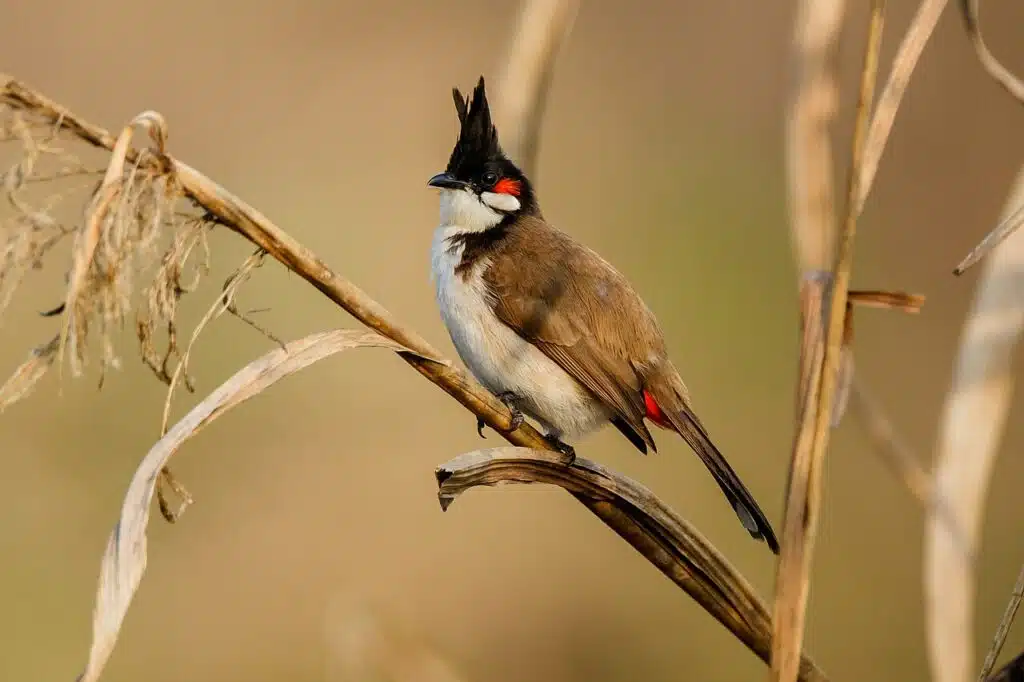
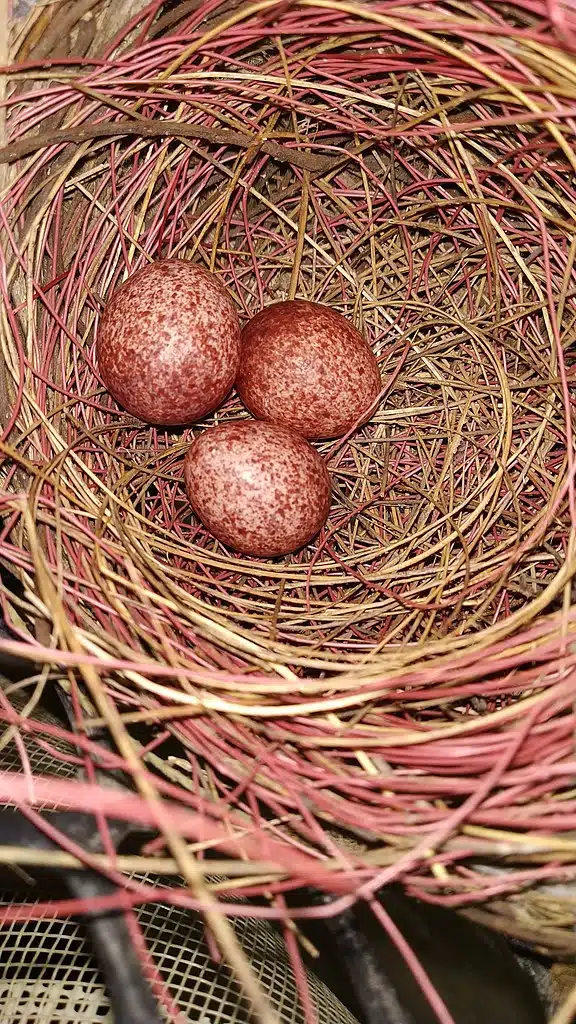
Red-whiskered Bulbuls (Pycnonotus jocosus) are birds with widespread territories, living together.
These birds lay bright eggs almost completely covered in red patterns which are larger at the wider end of the egg.
A short incubation period of up to 2 weeks is specific to these eggs. The eggs remain in the nest built by the female in this period.
Once the chicks emerge, they are fed by both males and females.
Feeding habits go from insects to fruits as these chicks grow and become independent.
Distribution – Asia
Red eggs nuance – dark red
9. House Wren
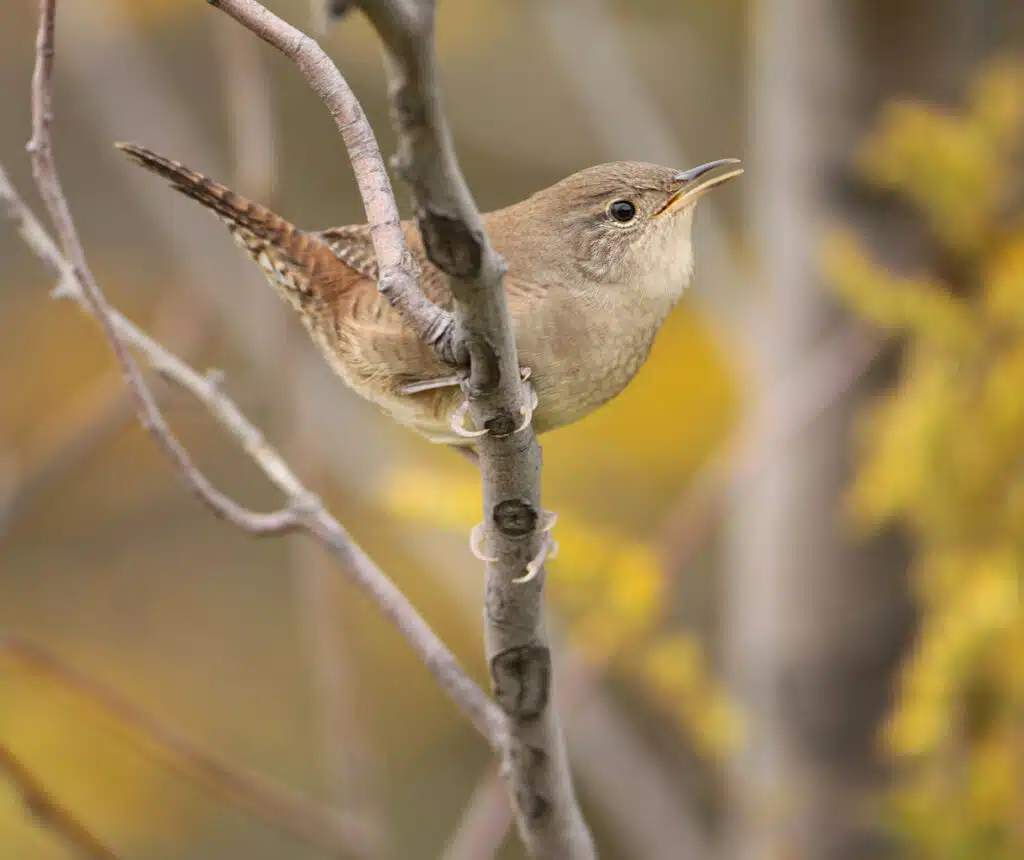
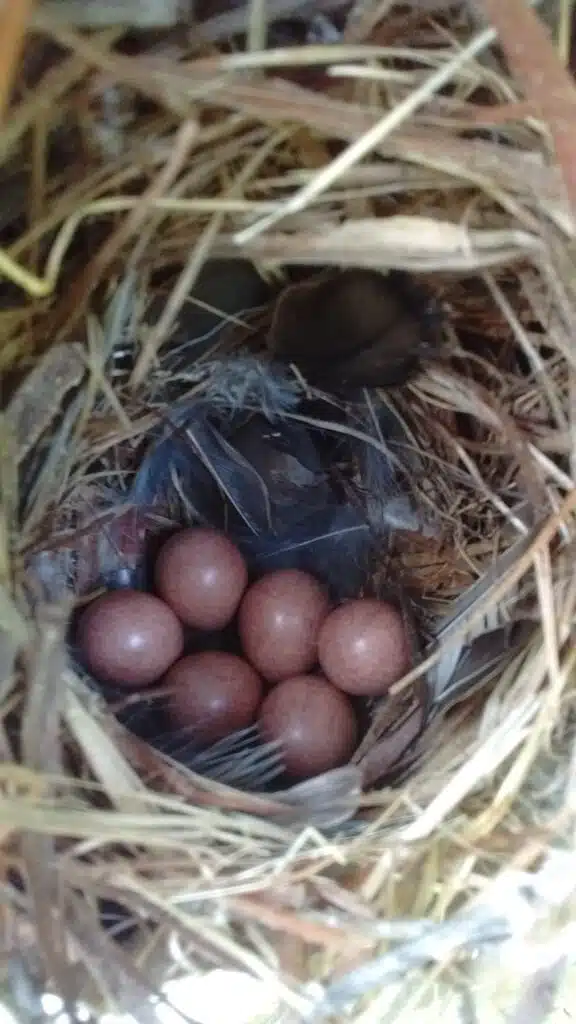
White, pink, and tan colors are all specific base nuances of House Wren (Troglodytes aedon) eggs.
The eggs of the species show a wide pattern of red decorations. This varies from spot to spot with a solid red wider egg end color.
Other variants include pink-red eggs, tan eggs with red spots, or even white eggs with tiny red spots.
The high color variation of the eggs is specific to their populations.
Females incubate the eggs and are fed by males during the period, only occasionally leaving the eggs for food.
Distribution – The Americas
Red eggs nuance – pink-red, brown-red, vivid red
10. White-bellied Nothura
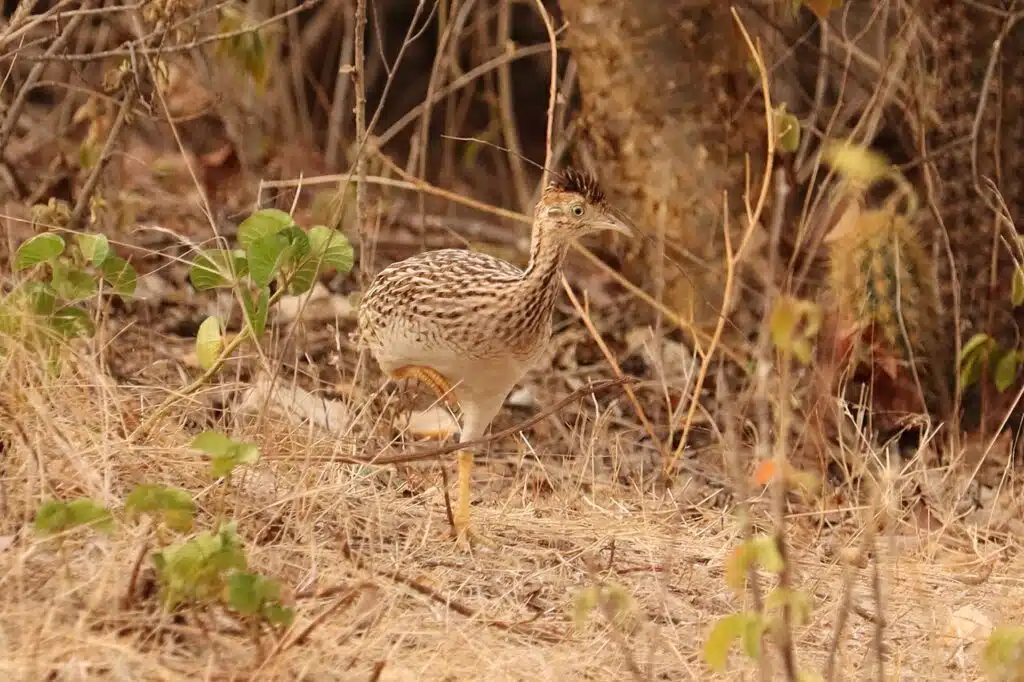
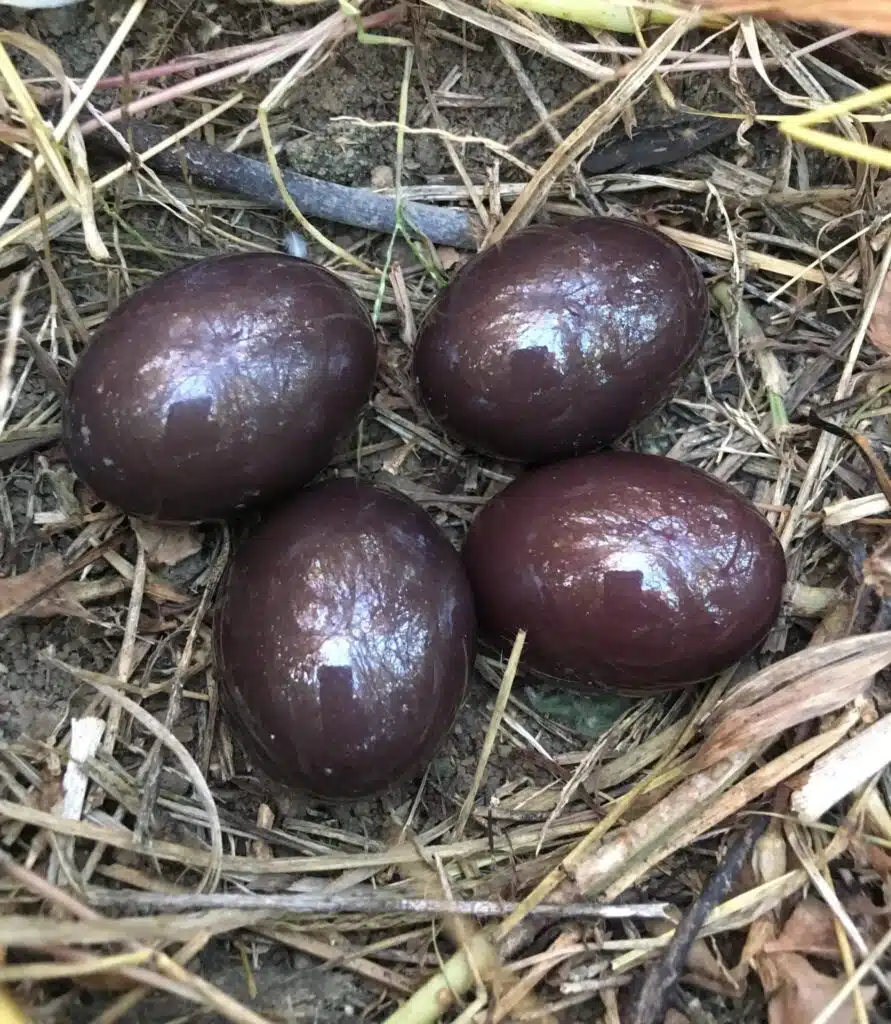
A bright red color is specific to The White-bellied Nothura (Nothura boraquira). This is a species highly present in Brazil’s grasslands where the eggs are seen in different nuances.
Different shades of pale red are specific to these eggs. Their color is uniform, without any spots or marks.
The eggs of the species are laid in communal nests. Up to 4 females can lay eggs in a single nest.
Even more, these eggs are incubated by a male and not by any of the females who have laid the eggs.
The eggs are laid directly in areas with tall grass or around shrubs and take up to 2 weeks to hatch.
Distribution – South America
Red eggs nuance – bright red
11. Spectacled Tetraka
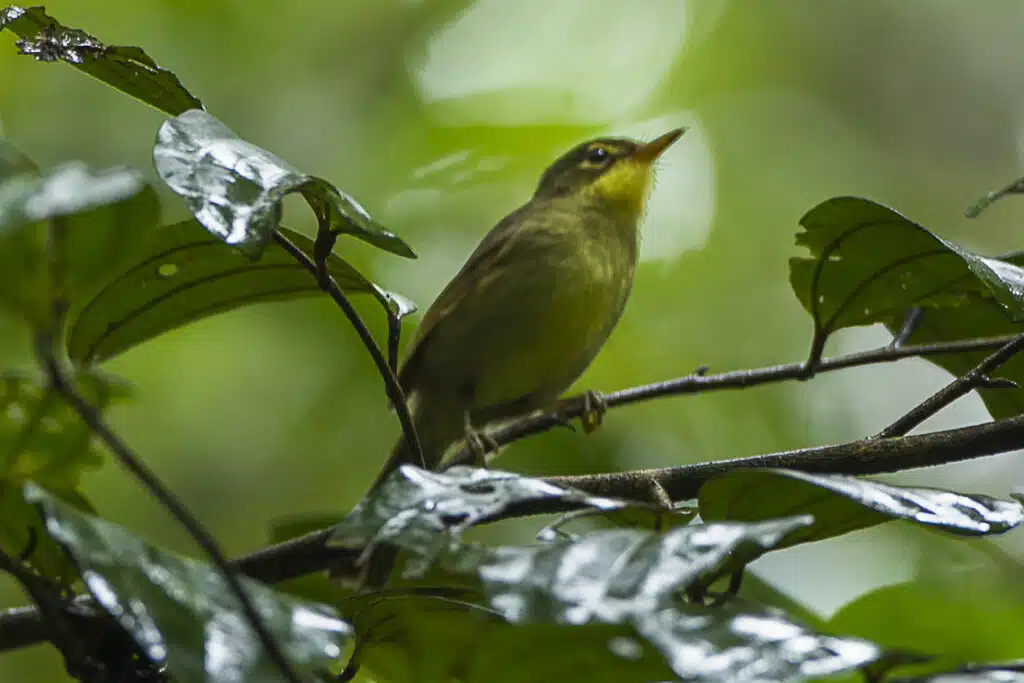
Pink to white, the eggs of The Spectacled Tetrakas (Xanthomixis zosterops) are decorated with red patterns.
These eggs have a longer incubation period of up to 19 days and may be exposed to higher predation risk compared to other species.
Found in Eastern Madagascar, Spectacled Tetrakas also lay a small clutch. Anywhere between 2 and 4 pink and red eggs are laid by the female.
The female is also responsible for the incubation period while males carry food for the emerging young.
With a high risk of predation in their tropical forests packed with predators, the eggs of Spectacled Tetrakas may also be laid in shared nests.
Distribution – Madagascar
Red eggs nuance – pink-red, red
12. Song Sparrow
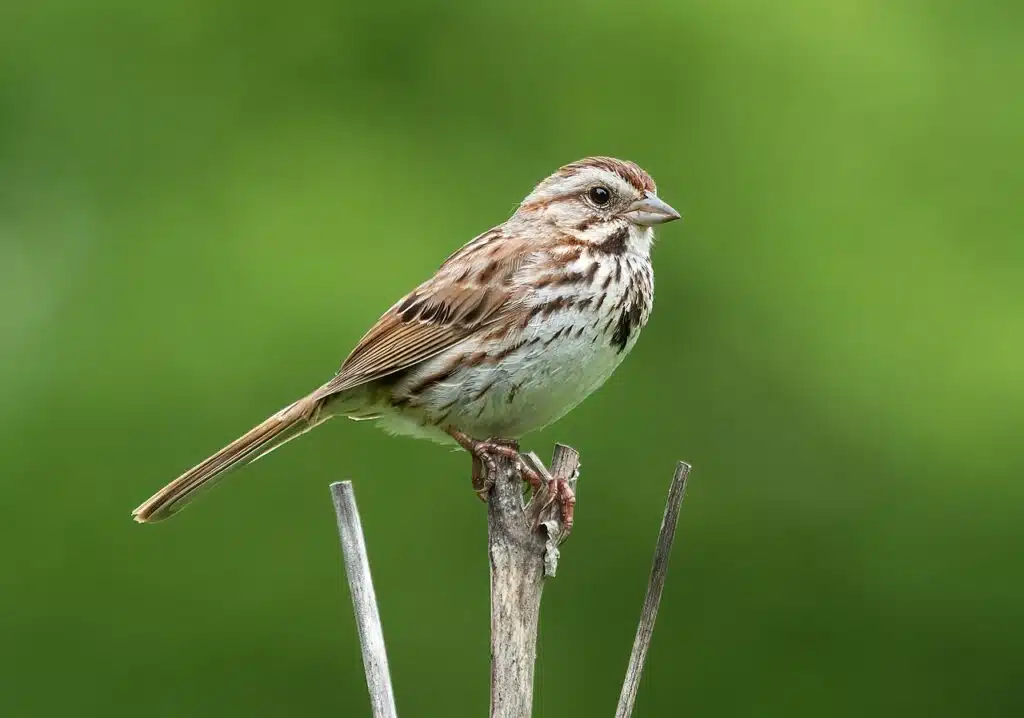
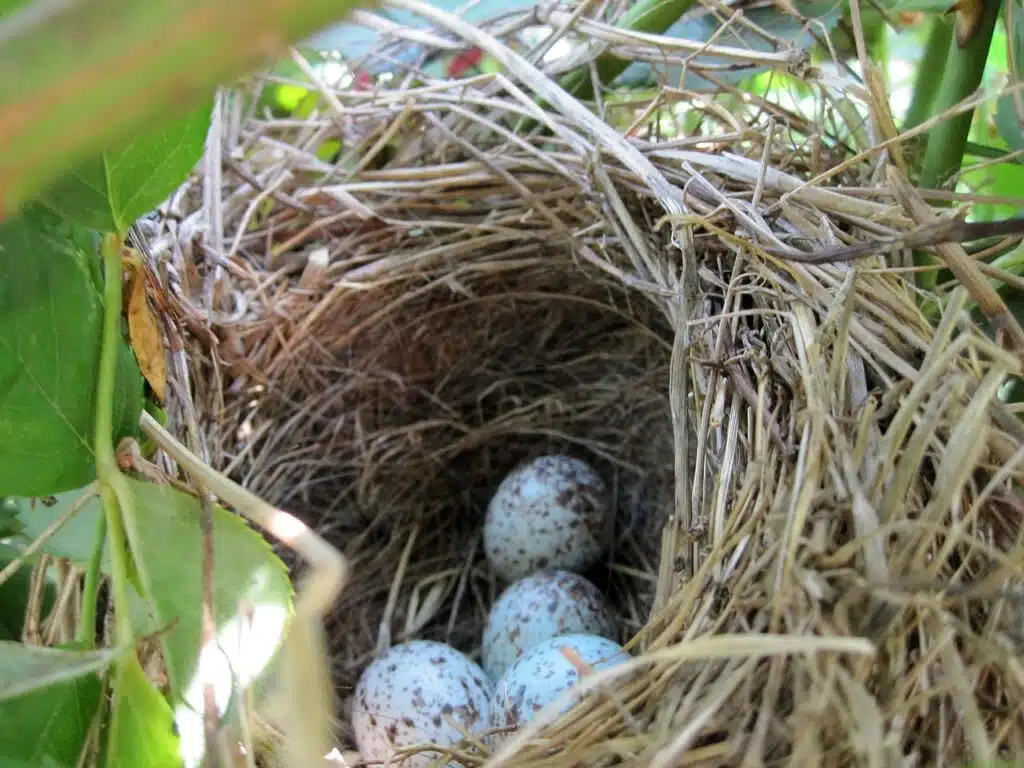
White to pale green, the eggs of Song Sparrows (Melospiza melodia) are decorated with brown-red patterns.
Small and large spots form the decorative patterns of these eggs. Larger and more numerous brown-red spots are seen on the wider side of the egg.
In some cases, the base color of these eggs can be very pale green.
The color variation of the eggs is as considerable as the color variation of the birds across North America.
As the birds may have black or brown streaks, Song Sparrow eggs can be white and brown-red or pale green and brown-red.
A typical clutch includes at least 3 eggs and is incubated for up to 2 weeks
Distribution – United States, Canada, Mexico
Red eggs nuance – brown-red
13. Ashy Prinia
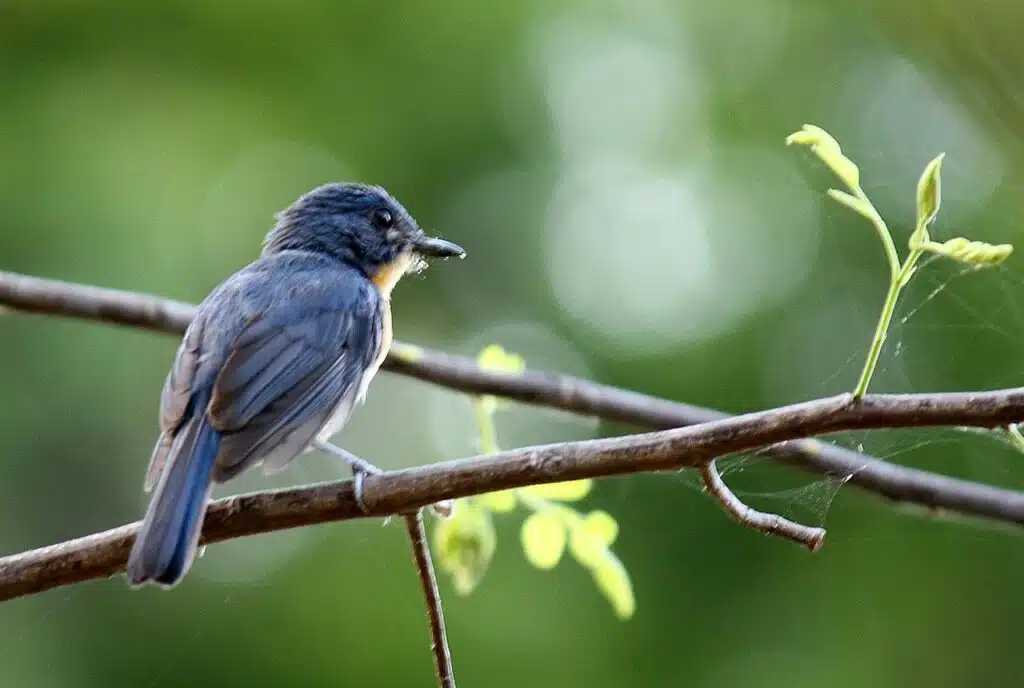
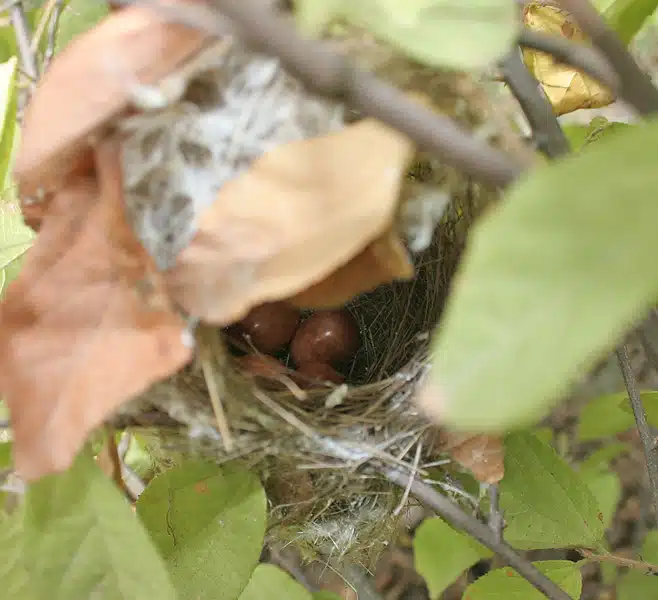
Various red nuances are characteristic of Ashy Prinia (Prinia socialis) eggs. They are seen in various red-brown nuances, pale red nuances, as well as white and red nuances.
Mostly similar to chestnut-red, these eggs tend to have a brighter narrower end.
These colorful red eggs are laid in a tubular-like nest built by females. The deep nest acts as a primary shield against predators.
The nest may be laid directly on the ground.
In some situations, female Ashy Prinias may use the materials of an old nest to build a new nest.
Distribution – India
Red eggs nuance – chestnut red, red-brown, brick red, orange-red
14. Olive-backed Pipit
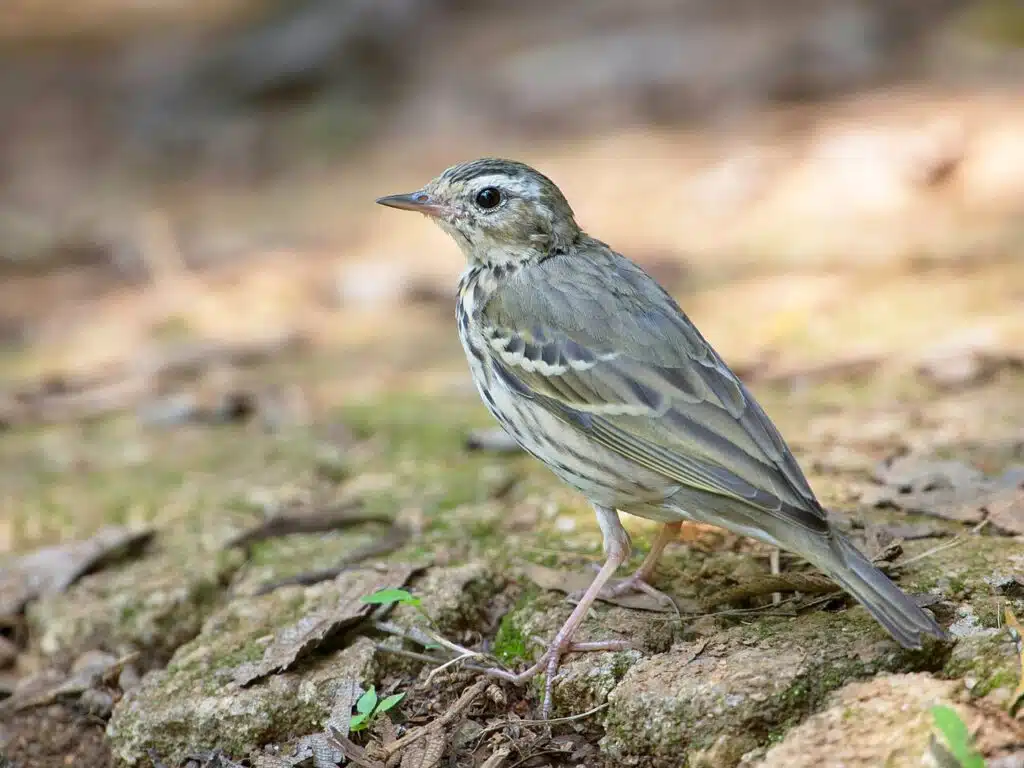
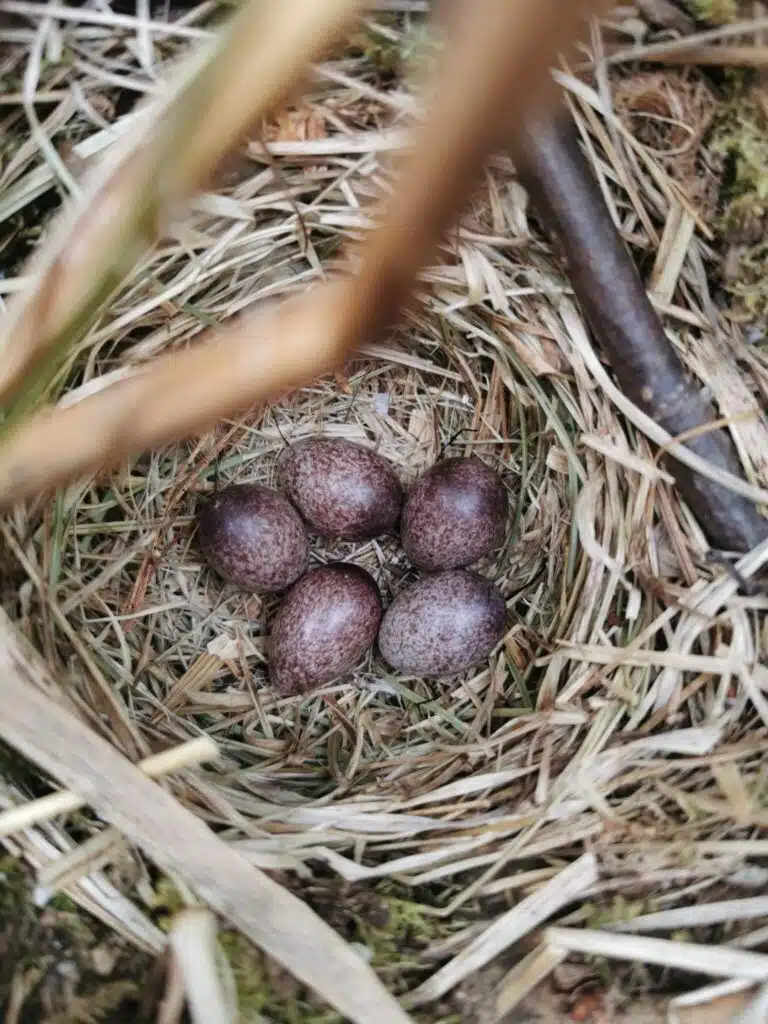
An Asian Native, Olive-backed Pipits (Anthus hodgsoni) are species marked by their dark appearance with olive plumage.
Dark olive to brown nuances is also mostly specific to their eggs which have red spots.
The red spots on these dark eggs have a dark nuance which makes them almost brown.
Clutches of at least 3 eggs are laid by the female Olive-backed Pipit which returns from India and regions of South Asia to its breeding sights.
This is a bird species that undergo long-distance migration. It moves towards South Asia when it comes to finding overwintering spots but it doesn’t migrate outside Asia.
Distribution – Northern, Central, and Southern Asia
Red eggs nuance – dark red
15. Yellow-vented Bulbul
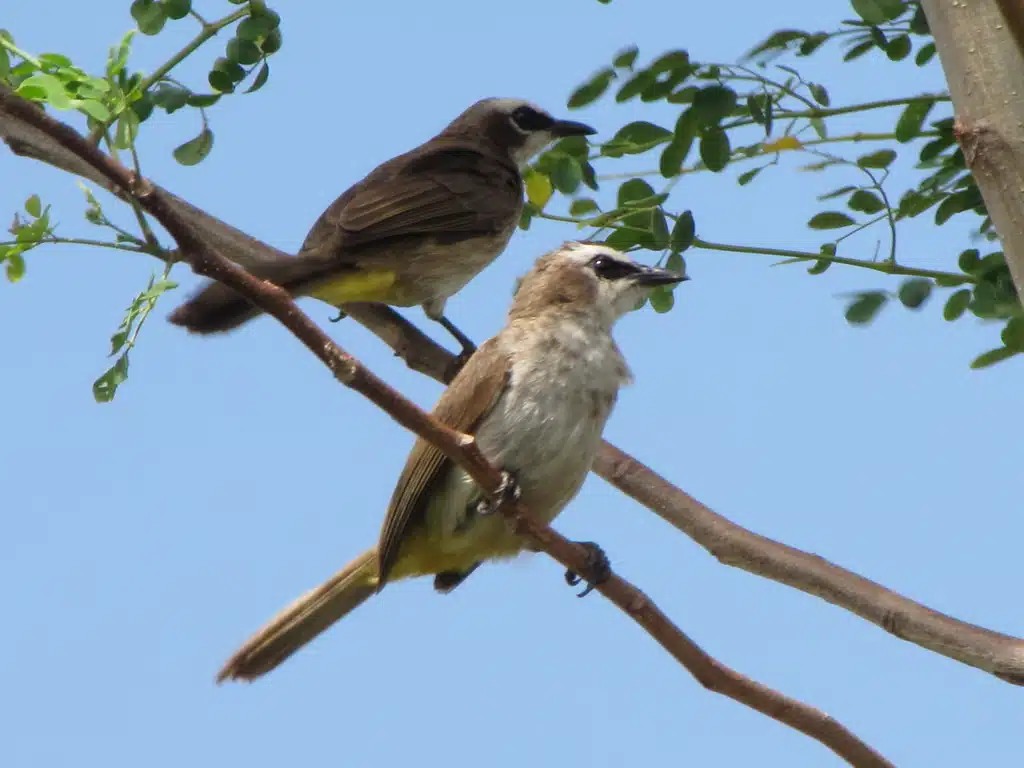
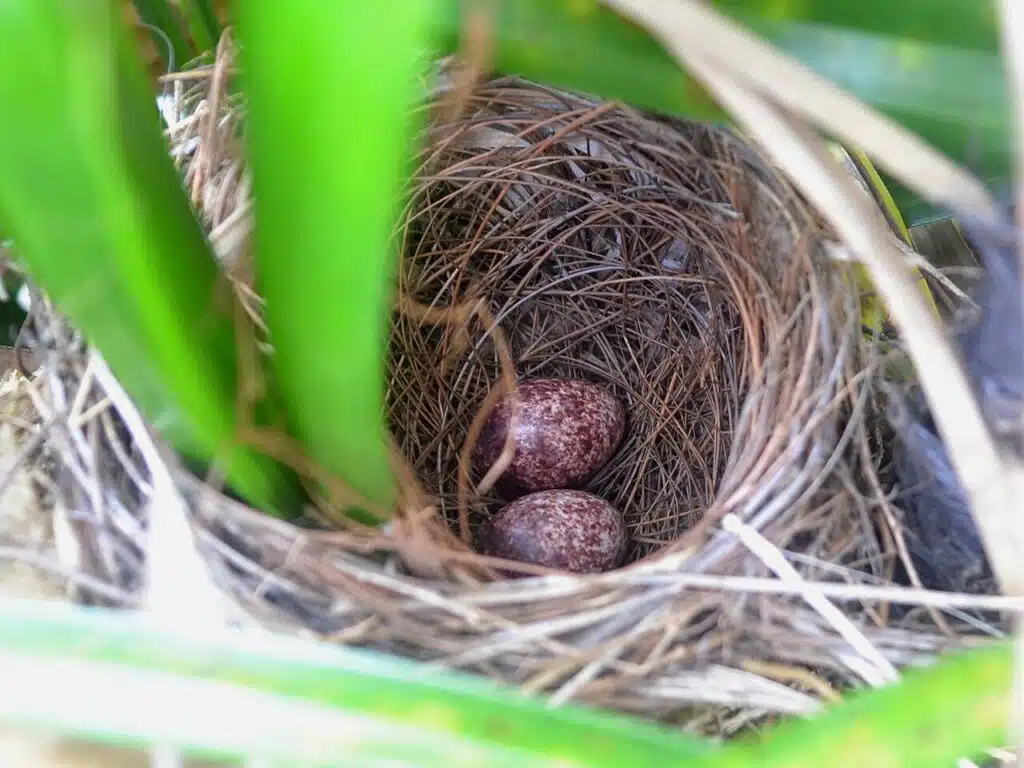
A Southern and Southeast Asia species, The Yellow-vented Bulbul (Pycnonotus goiavier) is a species that lays multicolored eggs.
These eggs may be white or pink and are decorated with red patterns. Dark nuances are specific to these red patterns.
Rust-red red or red-brown patterns are seen on Yellow-vented Bulbul eggs. A higher concentration of red patterns is specific to the wider side of the egg.
Other color variants are also seen across the multiple Yellow-vented Bulbul subspecies, all with red patterns.
A white egg variation with red patterns only on the wider end of the egg is also spotted within its range.
Clutches of up to 5 eggs are specific to these birds. Females build nests from vegetation.
Cylindrical-shaped nests with a cup-shaped bottom are specific to these birds.
Distribution – Southeast Asia
Red eggs nuance – dark red